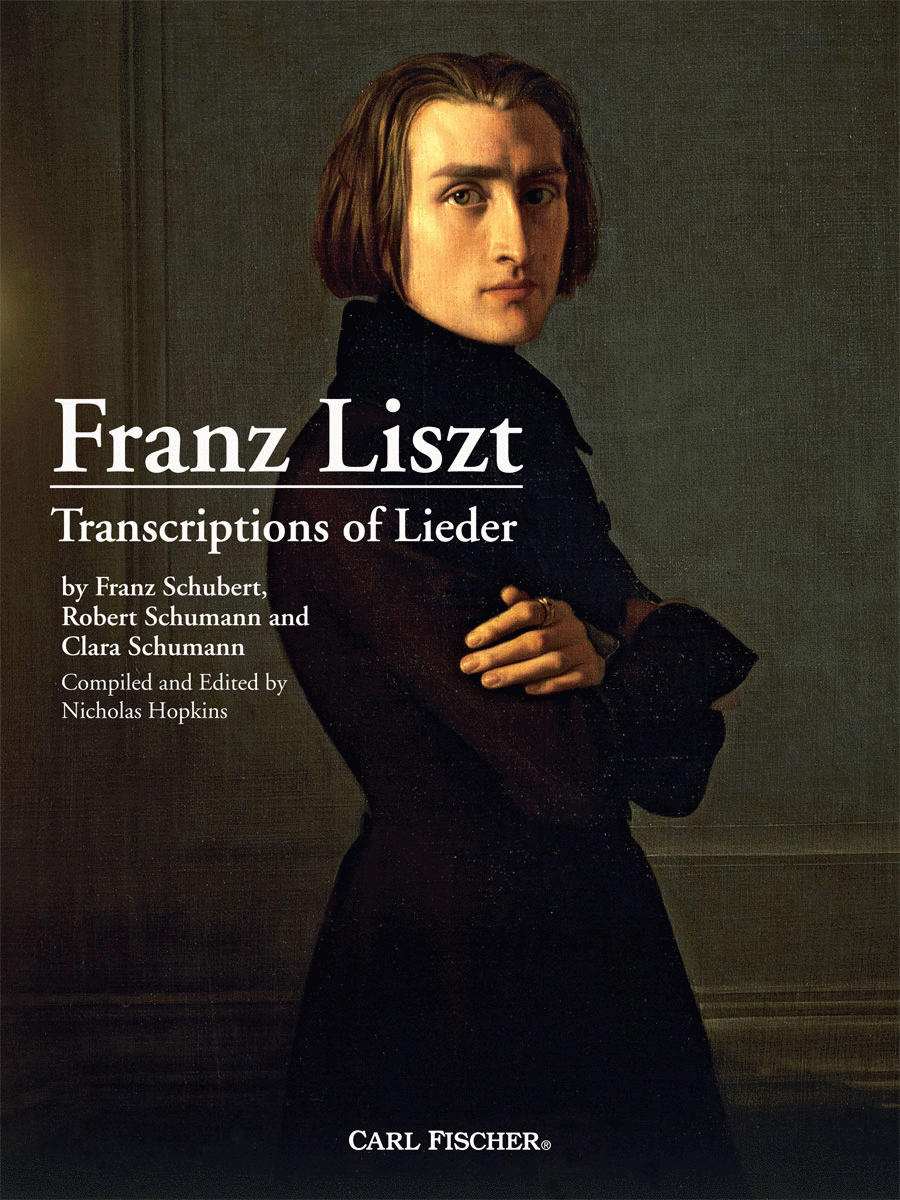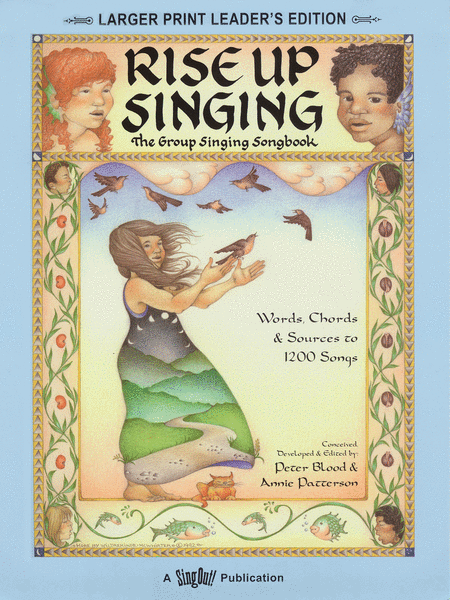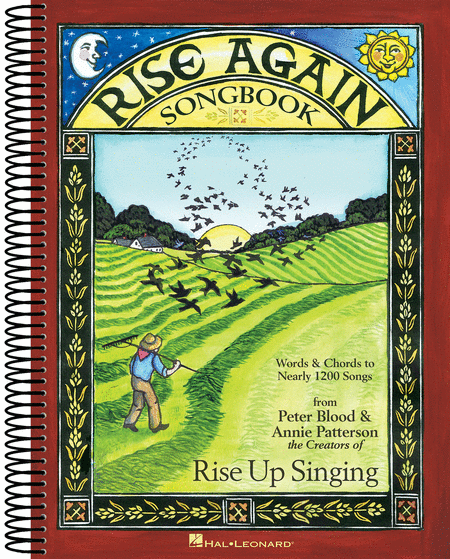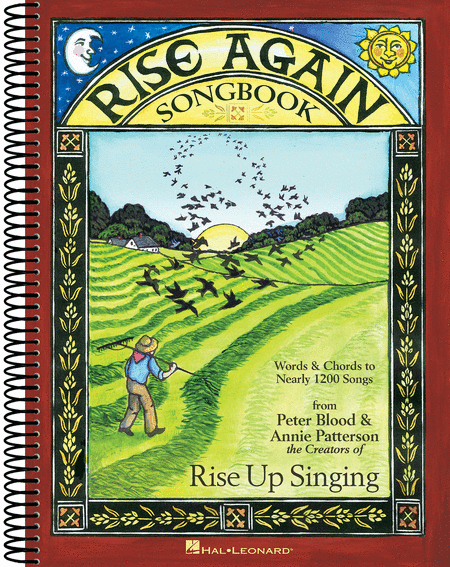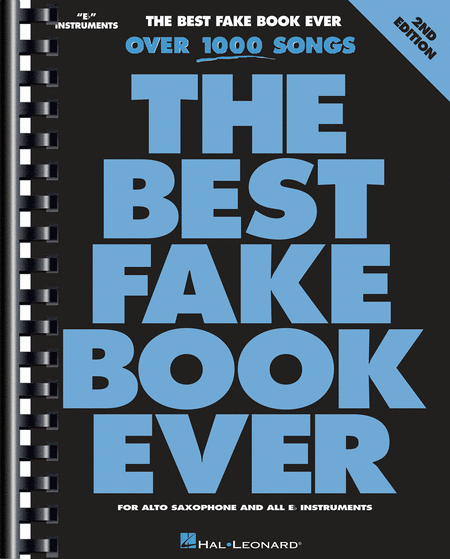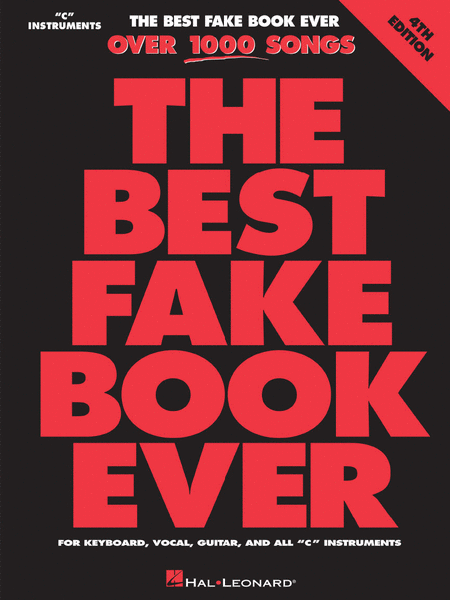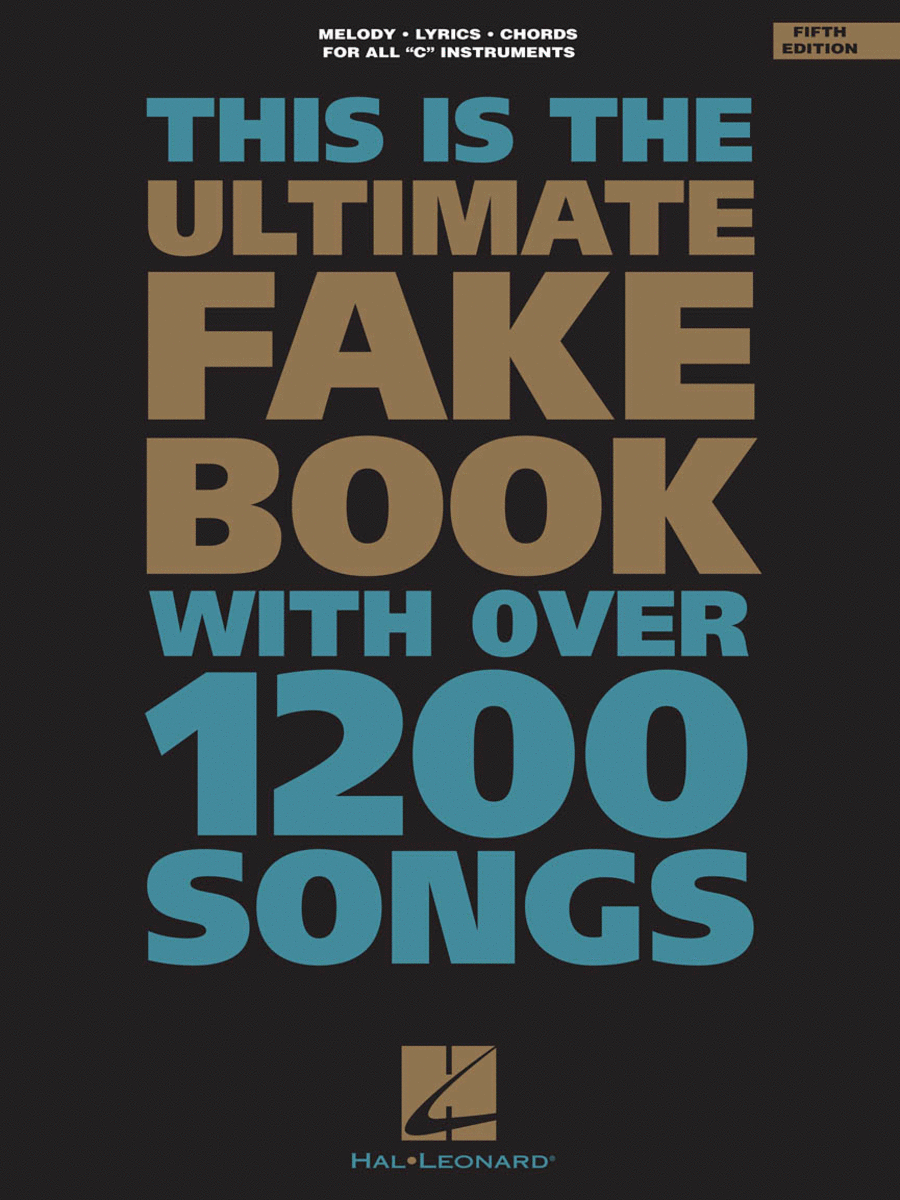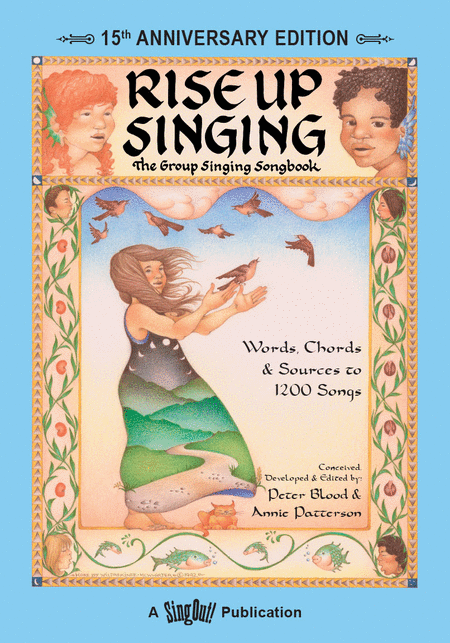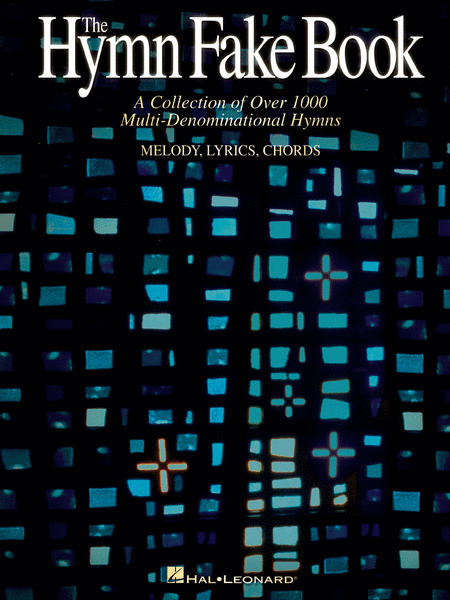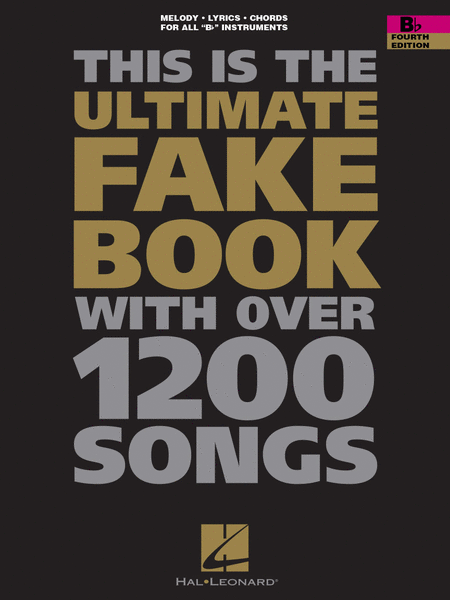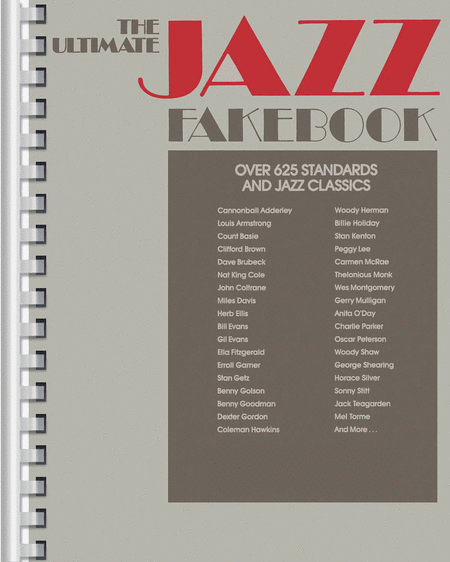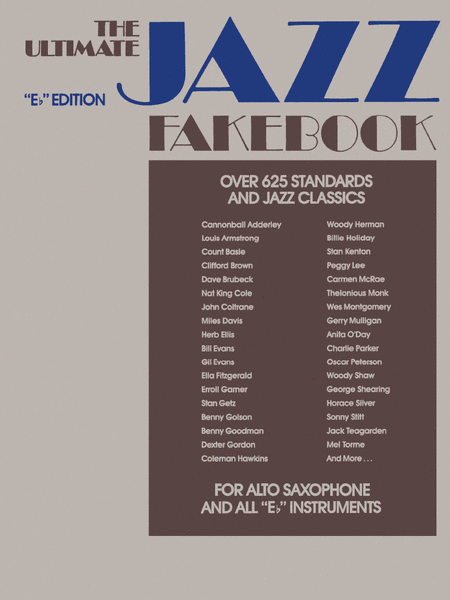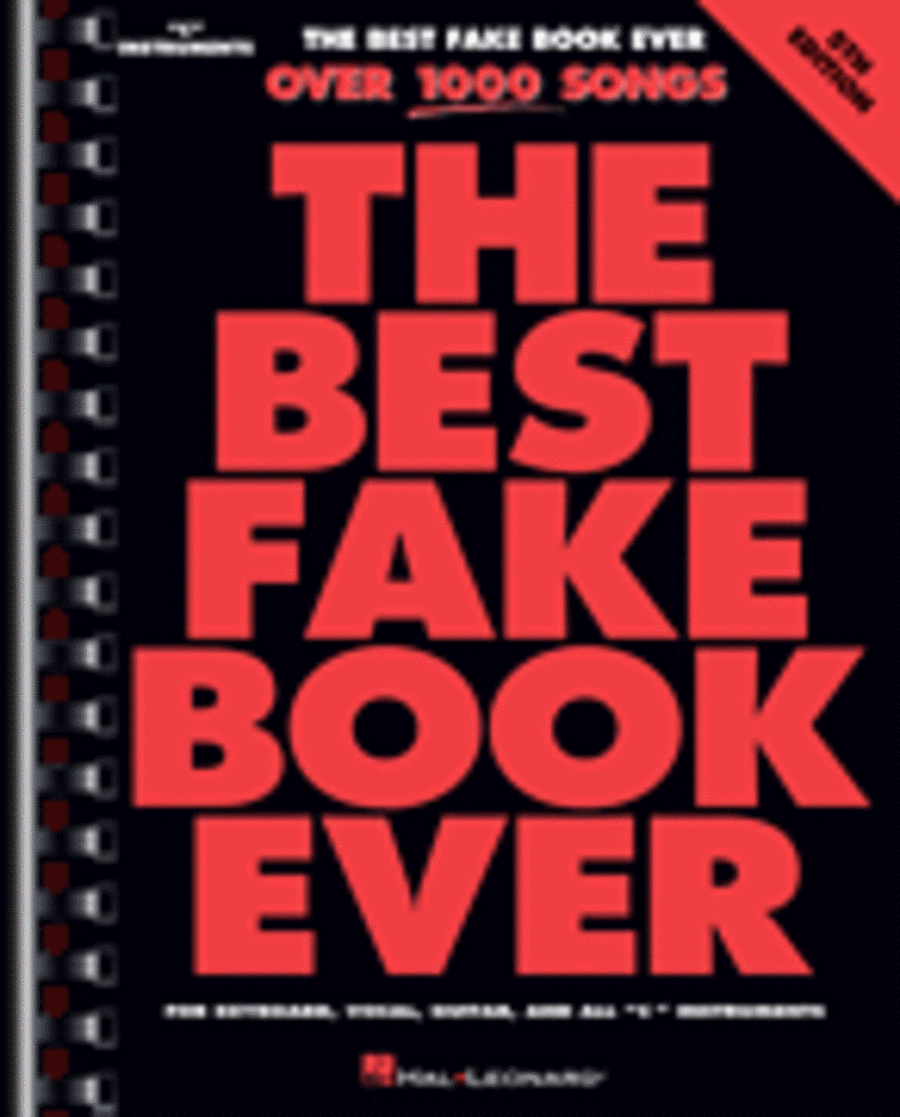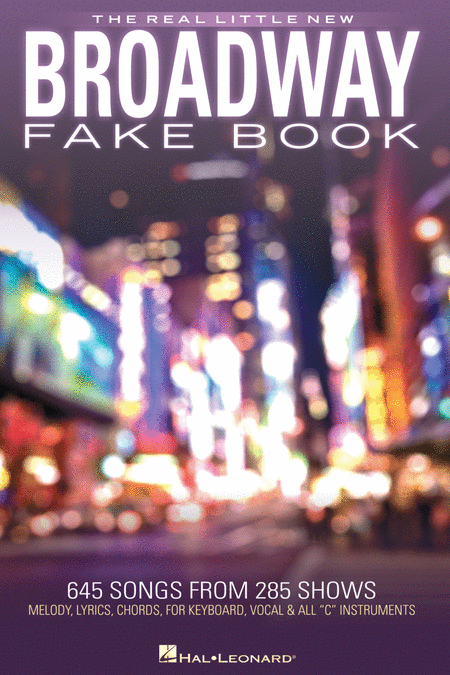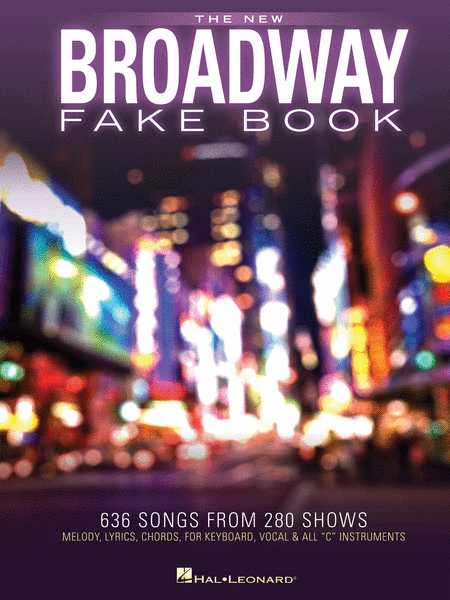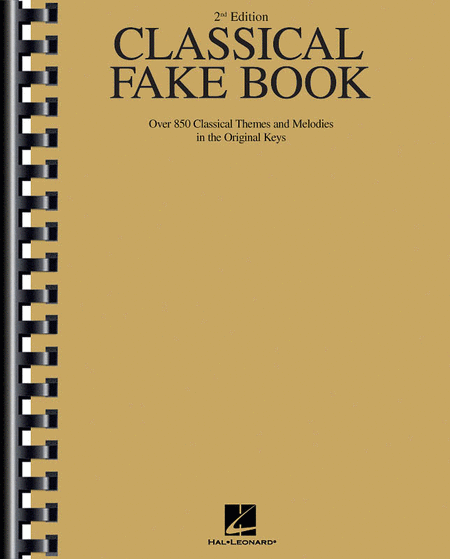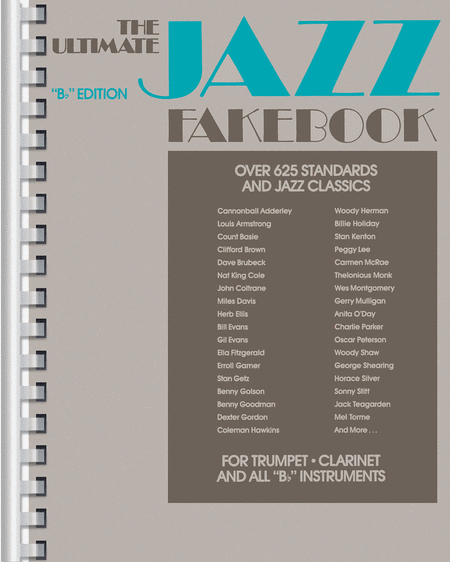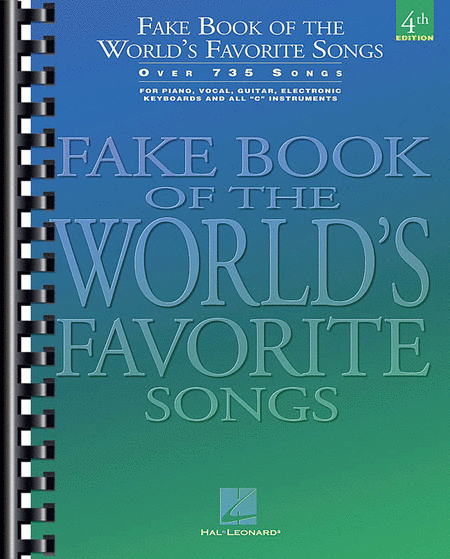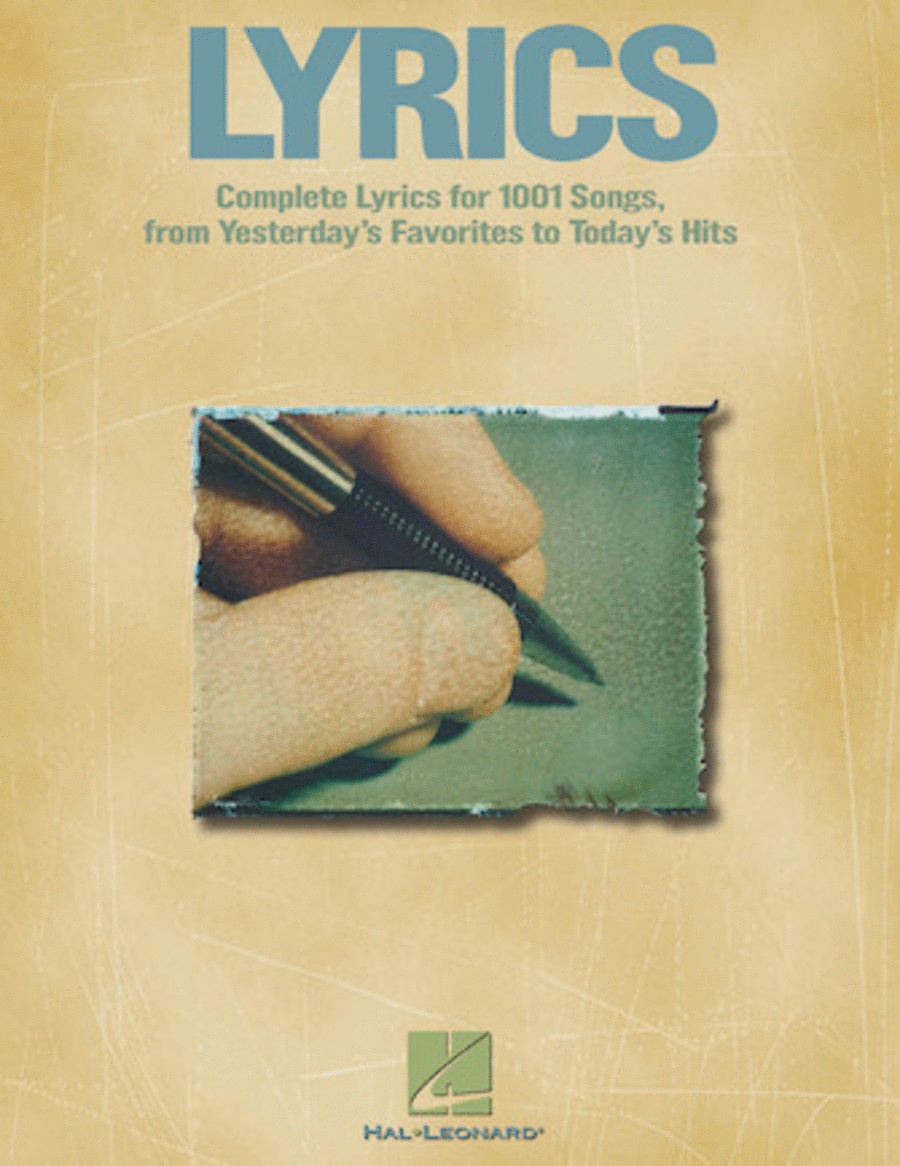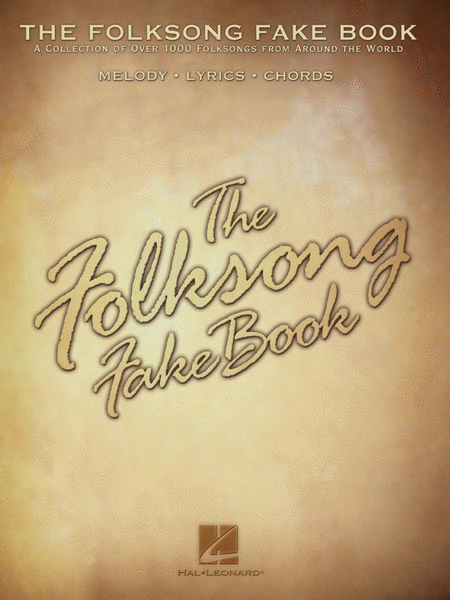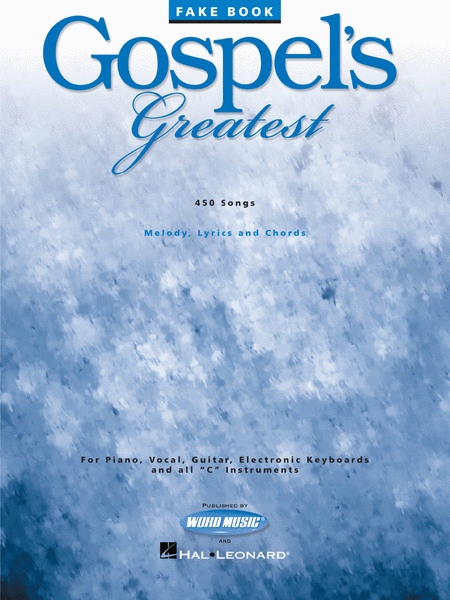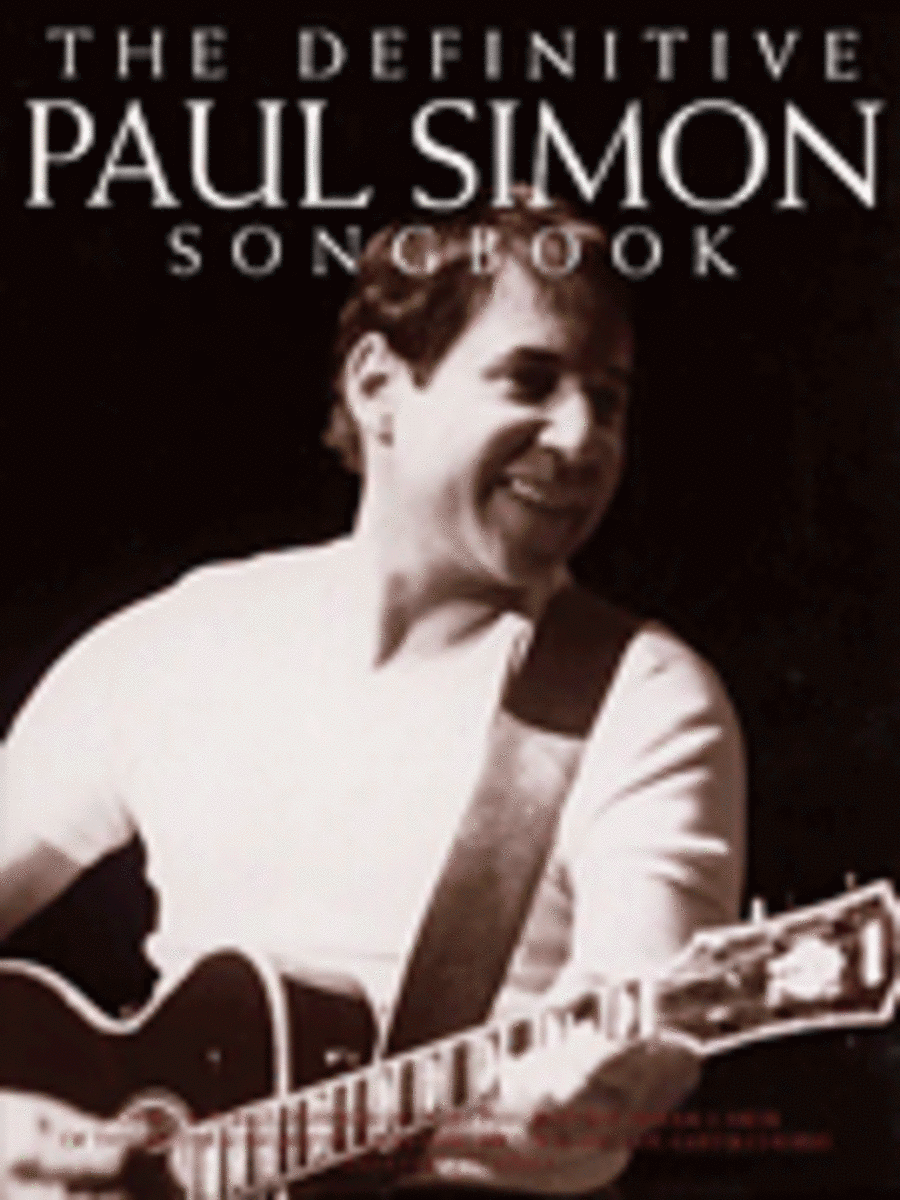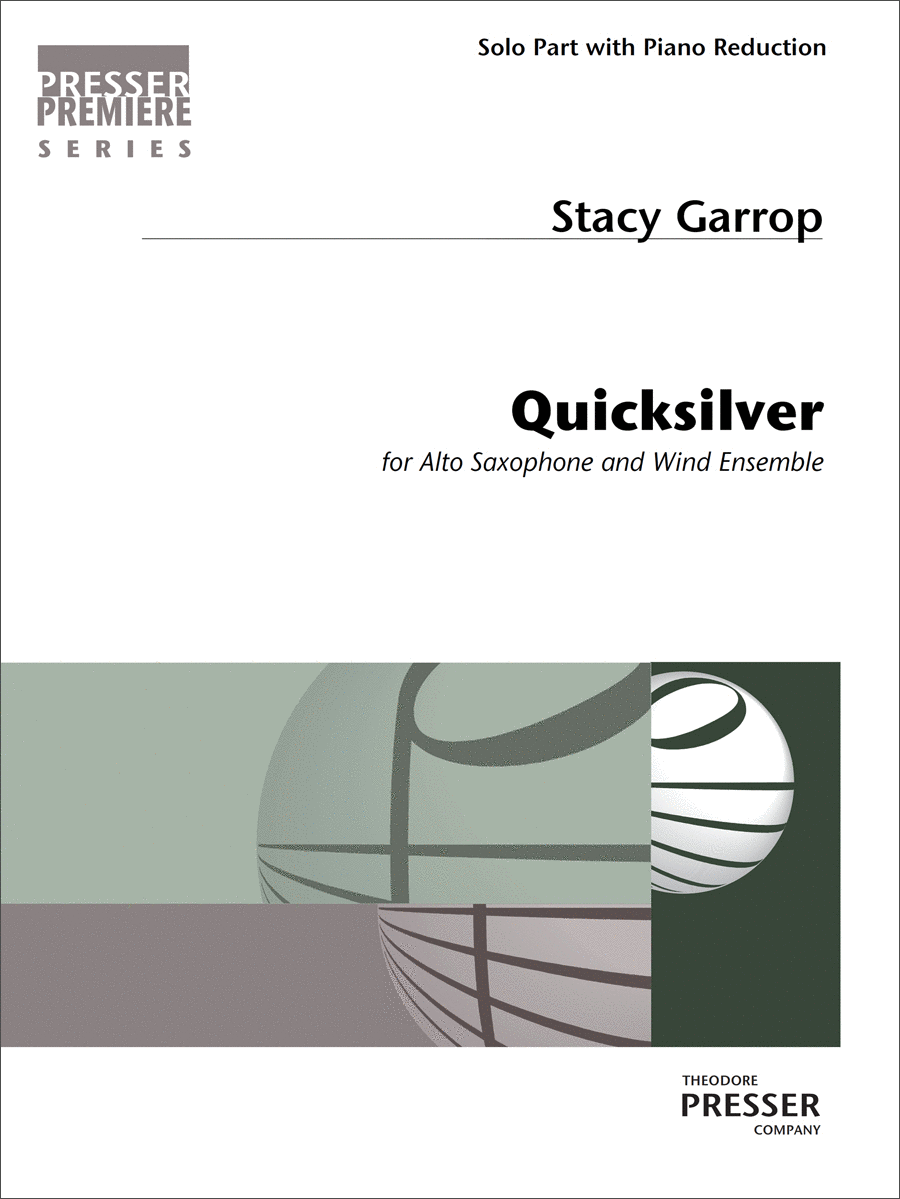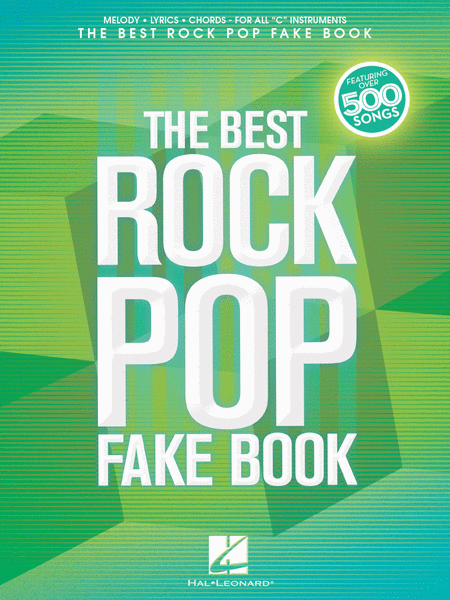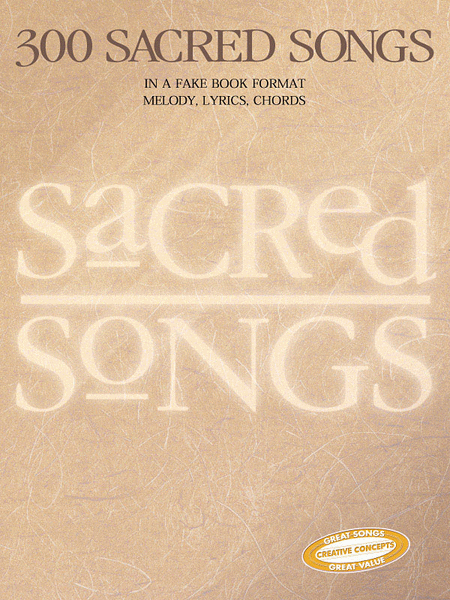|
| Transcriptions of Lieder
Piano seul
Carl Fischer
Chamber Music Piano SKU: CF.PL1056 Composed by Clara Wieck-Schumann, Fran...(+)
Chamber Music Piano
SKU: CF.PL1056
Composed by Clara
Wieck-Schumann, Franz
Schubert, and Robert
Schumann. Edited by
Nicholas Hopkins.
Collection. With Standard
notation. 128 pages. Carl
Fischer Music #PL1056.
Published by Carl Fischer
Music (CF.PL1056).
ISBN 9781491153390.
UPC: 680160910892.
Transcribed by Franz
Liszt. Introduction
It is true that Schubert
himself is somewhat to
blame for the very
unsatisfactory manner in
which his admirable piano
pieces are treated. He
was too immoderately
productive, wrote
incessantly, mixing
insignificant with
important things, grand
things with mediocre
work, paid no heed to
criticism, and always
soared on his wings. Like
a bird in the air, he
lived in music and sang
in angelic fashion.
--Franz Liszt, letter to
Dr. S. Lebert (1868) Of
those compositions that
greatly interest me,
there are only Chopin's
and yours. --Franz Liszt,
letter to Robert Schumann
(1838) She [Clara
Schumann] was astounded
at hearing me. Her
compositions are really
very remarkable,
especially for a woman.
There is a hundred times
more creativity and real
feeling in them than in
all the past and present
fantasias by Thalberg.
--Franz Liszt, letter to
Marie d'Agoult (1838)
Chretien Urhan
(1790-1845) was a
Belgian-born violinist,
organist and composer who
flourished in the musical
life of Paris in the
early nineteenth century.
According to various
accounts, he was deeply
religious, harshly
ascetic and wildly
eccentric, though revered
by many important and
influential members of
the Parisian musical
community. Regrettably,
history has forgotten
Urhan's many musical
achievements, the most
important of which was
arguably his pioneering
work in promoting the
music of Franz Schubert.
He devoted much of his
energies to championing
Schubert's music, which
at the time was unknown
outside of Vienna.
Undoubtedly, Urhan was
responsible for
stimulating this
enthusiasm in Franz
Liszt; Liszt regularly
heard Urhan's organ
playing in the
St.-Vincent-de-Paul
church in Paris, and the
two became personal
acquaintances. At
eighteen years of age,
Liszt was on the verge of
establishing himself as
the foremost pianist in
Europe, and this
awakening to Schubert's
music would prove to be a
profound experience.
Liszt's first travels
outside of his native
provincial Hungary were
to Vienna in 1821-1823,
where his father enrolled
him in studies with Carl
Czerny (piano) and
Antonio Salieri (music
theory). Both men had
important involvements
with Schubert; Czerny
(like Urhan) as performer
and advocate of
Schubert's music and
Salieri as his theory and
composition teacher from
1813-1817. Curiously,
Liszt and Schubert never
met personally, despite
their geographical
proximity in Vienna
during these years.
Inevitably, legends later
arose that the two had
been personal
acquaintances, although
Liszt would dismiss these
as fallacious: I never
knew Schubert personally,
he was once quoted as
saying. Liszt's initial
exposure to Schubert's
music was the Lieder,
what Urhan prized most of
all. He accompanied the
tenor Benedict
Randhartinger in numerous
performances of
Schubert's Lieder and
then, perhaps realizing
that he could benefit the
composer more on his own
terms, transcribed a
number of the Lieder for
piano solo. Many of these
transcriptions he would
perform himself on
concert tour during the
so-called Glanzzeit, or
time of splendor from
1839-1847. This publicity
did much to promote
reception of Schubert's
music throughout Europe.
Once Liszt retired from
the concert stage and
settled in Weimar as a
conductor in the 1840s,
he continued to perform
Schubert's orchestral
music, his Symphony No. 9
being a particular
favorite, and is credited
with giving the world
premiere performance of
Schubert's opera Alfonso
und Estrella in 1854. At
this time, he
contemplated writing a
biography of the
composer, which
regrettably remained
uncompleted. Liszt's
devotion to Schubert
would never waver.
Liszt's relationship with
Robert and Clara Schumann
was far different and far
more complicated; by
contrast, they were all
personal acquaintances.
What began as a
relationship of mutual
respect and admiration
soon deteriorated into
one of jealousy and
hostility, particularly
on the Schumann's part.
Liszt's initial contact
with Robert's music
happened long before they
had met personally, when
Liszt published an
analysis of Schumann's
piano music for the
Gazette musicale in 1837,
a gesture that earned
Robert's deep
appreciation. In the
following year Clara met
Liszt during a concert
tour in Vienna and
presented him with more
of Schumann's piano
music. Clara and her
father Friedrich Wieck,
who accompanied Clara on
her concert tours, were
quite taken by Liszt: We
have heard Liszt. He can
be compared to no other
player...he arouses
fright and astonishment.
His appearance at the
piano is indescribable.
He is an original...he is
absorbed by the piano.
Liszt, too, was impressed
with Clara--at first the
energy, intelligence and
accuracy of her piano
playing and later her
compositions--to the
extent that he dedicated
to her the 1838 version
of his Etudes d'execution
transcendante d'apres
Paganini. Liszt had a
closer personal
relationship with Clara
than with Robert until
the two men finally met
in 1840. Schumann was
astounded by Liszt's
piano playing. He wrote
to Clara that Liszt had
played like a god and had
inspired indescribable
furor of applause. His
review of Liszt even
included a heroic
personification with
Napoleon. In Leipzig,
Schumann was deeply
impressed with Liszt's
interpretations of his
Noveletten, Op. 21 and
Fantasy in C Major, Op.
17 (dedicated to Liszt),
enthusiastically
observing that, I feel as
if I had known you twenty
years. Yet a variety of
events followed that
diminished Liszt's glory
in the eyes of the
Schumanns. They became
critical of the cult-like
atmosphere that arose
around his recitals, or
Lisztomania as it came to
be called; conceivably,
this could be attributed
to professional jealousy.
Clara, in particular,
came to loathe Liszt,
noting in a letter to
Joseph Joachim, I despise
Liszt from the depths of
my soul. She recorded a
stunning diary entry a
day after Liszt's death,
in which she noted, He
was an eminent keyboard
virtuoso, but a dangerous
example for the
young...As a composer he
was terrible. By
contrast, Liszt did not
share in these negative
sentiments; no evidence
suggests that he had any
ill-regard for the
Schumanns. In Weimar, he
did much to promote
Schumann's music,
conducting performances
of his Scenes from Faust
and Manfred, during a
time in which few
orchestras expressed
interest, and premiered
his opera Genoveva. He
later arranged a benefit
concert for Clara
following Robert's death,
featuring Clara as
soloist in Robert's Piano
Concerto, an event that
must have been
exhilarating to witness.
Regardless, her opinion
of him would never
change, despite his
repeated gestures of
courtesy and respect.
Liszt's relationship with
Schubert was a spiritual
one, with music being the
one and only link between
the two men. That with
the Schumanns was
personal, with music
influenced by a hero
worship that would
aggravate the
relationship over time.
Nonetheless, Liszt would
remain devoted to and
enthusiastic for the
music and achievements of
these composers. He would
be a vital force in
disseminating their music
to a wider audience, as
he would be with many
other composers
throughout his career.
His primary means for
accomplishing this was
the piano transcription.
Liszt and the
Transcription
Transcription versus
Paraphrase Transcription
and paraphrase were
popular terms in
nineteenth-century music,
although certainly not
unique to this period.
Musicians understood that
there were clear
distinctions between
these two terms, but as
is often the case these
distinctions could be
blurred. Transcription,
literally writing over,
entails reworking or
adapting a piece of music
for a performance medium
different from that of
its original; arrangement
is a possible synonym.
Adapting is a key part of
this process, for the
success of a
transcription relies on
the transcriber's ability
to adapt the piece to the
different medium. As a
result, the pre-existing
material is generally
kept intact, recognizable
and intelligible; it is
strict, literal,
objective. Contextual
meaning is maintained in
the process, as are
elements of style and
form. Paraphrase, by
contrast, implies
restating something in a
different manner, as in a
rewording of a document
for reasons of clarity.
In nineteenth-century
music, paraphrasing
indicated elaborating a
piece for purposes of
expressive virtuosity,
often as a vehicle for
showmanship. Variation is
an important element, for
the source material may
be varied as much as the
paraphraser's imagination
will allow; its purpose
is metamorphosis.
Transcription is adapting
and arranging;
paraphrasing is
transforming and
reworking. Transcription
preserves the style of
the original; paraphrase
absorbs the original into
a different style.
Transcription highlights
the original composer;
paraphrase highlights the
paraphraser.
Approximately half of
Liszt's compositional
output falls under the
category of transcription
and paraphrase; it is
noteworthy that he never
used the term
arrangement. Much of his
early compositional
activities were
transcriptions and
paraphrases of works of
other composers, such as
the symphonies of
Beethoven and Berlioz,
vocal music by Schubert,
and operas by Donizetti
and Bellini. It is
conceivable that he
focused so intently on
work of this nature early
in his career as a means
to perfect his
compositional technique,
although transcription
and paraphrase continued
well after the technique
had been mastered; this
might explain why he
drastically revised and
rewrote many of his
original compositions
from the 1830s (such as
the Transcendental Etudes
and Paganini Etudes) in
the 1850s. Charles Rosen,
a sympathetic interpreter
of Liszt's piano works,
observes, The new
revisions of the
Transcendental Etudes are
not revisions but concert
paraphrases of the old,
and their art lies in the
technique of
transformation. The
Paganini etudes are piano
transcriptions of violin
etudes, and the
Transcendental Etudes are
piano transcriptions of
piano etudes. The
principles are the same.
He concludes by noting,
Paraphrase has shaded off
into
composition...Composition
and paraphrase were not
identical for him, but
they were so closely
interwoven that
separation is impossible.
The significance of
transcription and
paraphrase for Liszt the
composer cannot be
overstated, and the
mutual influence of each
needs to be better
understood. Undoubtedly,
Liszt the composer as we
know him today would be
far different had he not
devoted so much of his
career to transcribing
and paraphrasing the
music of others. He was
perhaps one of the first
composers to contend that
transcription and
paraphrase could be
genuine art forms on
equal par with original
pieces; he even claimed
to be the first to use
these two terms to
describe these classes of
arrangements. Despite the
success that Liszt
achieved with this type
of work, others viewed it
with circumspection and
criticism. Robert
Schumann, although deeply
impressed with Liszt's
keyboard virtuosity, was
harsh in his criticisms
of the transcriptions.
Schumann interpreted them
as indicators that
Liszt's virtuosity had
hindered his
compositional development
and suggested that Liszt
transcribed the music of
others to compensate for
his own compositional
deficiencies.
Nonetheless, Liszt's
piano transcriptions,
what he sometimes called
partitions de piano (or
piano scores), were
instrumental in promoting
composers whose music was
unknown at the time or
inaccessible in areas
outside of major European
capitals, areas that
Liszt willingly toured
during his Glanzzeit. To
this end, the
transcriptions had to be
literal arrangements for
the piano; a Beethoven
symphony could not be
introduced to an
unknowing audience if its
music had been subjected
to imaginative
elaborations and
variations. The same
would be true of the 1833
transcription of
Berlioz's Symphonie
fantastique (composed
only three years
earlier), the
astonishingly novel
content of which would
necessitate a literal and
intelligible rendering.
Opera, usually more
popular and accessible
for the general public,
was a different matter,
and in this realm Liszt
could paraphrase the
original and manipulate
it as his imagination
would allow without
jeopardizing its
reception; hence, the
paraphrases on the operas
of Bellini, Donizetti,
Mozart, Meyerbeer and
Verdi. Reminiscence was
another term coined by
Liszt for the opera
paraphrases, as if the
composer were reminiscing
at the keyboard following
a memorable evening at
the opera. Illustration
(reserved on two
occasions for Meyerbeer)
and fantasy were
additional terms. The
operas of Wagner were
exceptions. His music was
less suited to paraphrase
due to its general lack
of familiarity at the
time. Transcription of
Wagner's music was thus
obligatory, as it was of
Beethoven's and Berlioz's
music; perhaps the
composer himself insisted
on this approach. Liszt's
Lieder Transcriptions
Liszt's initial
encounters with
Schubert's music, as
mentioned previously,
were with the Lieder. His
first transcription of a
Schubert Lied was Die
Rose in 1833, followed by
Lob der Tranen in 1837.
Thirty-nine additional
transcriptions appeared
at a rapid pace over the
following three years,
and in 1846, the Schubert
Lieder transcriptions
would conclude, by which
point he had completed
fifty-eight, the most of
any composer. Critical
response to these
transcriptions was highly
favorable--aside from the
view held by
Schumann--particularly
when Liszt himself played
these pieces in concert.
Some were published
immediately by Anton
Diabelli, famous for the
theme that inspired
Beethoven's variations.
Others were published by
the Viennese publisher
Tobias Haslinger (one of
Beethoven's and
Schubert's publishers in
the 1820s), who sold his
reserves so quickly that
he would repeatedly plead
for more. However,
Liszt's enthusiasm for
work of this nature soon
became exhausted, as he
noted in a letter of 1839
to the publisher
Breitkopf und Hartel:
That good Haslinger
overwhelms me with
Schubert. I have just
sent him twenty-four new
songs (Schwanengesang and
Winterreise), and for the
moment I am rather tired
of this work. Haslinger
was justified in his
demands, for the Schubert
transcriptions were
received with great
enthusiasm. One Gottfried
Wilhelm Fink, then editor
of the Allgemeine
musikalische Zeitung,
observed of these
transcriptions: Nothing
in recent memory has
caused such sensation and
enjoyment in both
pianists and audiences as
these arrangements...The
demand for them has in no
way been satisfied; and
it will not be until
these arrangements are
seen on pianos
everywhere. They have
indeed made quite a
splash. Eduard Hanslick,
never a sympathetic
critic of Liszt's music,
acknowledged thirty years
after the fact that,
Liszt's transcriptions of
Schubert Lieder were
epoch-making. There was
hardly a concert in which
Liszt did not have to
play one or two of
them--even when they were
not listed on the
program. These
transcriptions quickly
became some of his most
sough-after pieces,
despite their extreme
technical demands.
Leading pianists of the
day, such as Clara Wieck
and Sigismond Thalberg,
incorporated them into
their concert programs
immediately upon
publication. Moreover,
the transcriptions would
serve as inspirations for
other composers, such as
Stephen Heller, Cesar
Franck and later Leopold
Godowsky, all of whom
produced their own
transcriptions of
Schubert's Lieder. Liszt
would transcribe the
Lieder of other composers
as well, including those
by Mendelssohn, Chopin,
Anton Rubinstein and even
himself. Robert Schumann,
of course, would not be
ignored. The first
transcription of a
Schumann Lied was the
celebrated Widmung from
Myrten in 1848, the only
Schumann transcription
that Liszt completed
during the composer's
lifetime. (Regrettably,
there is no evidence of
Schumann's regard of this
transcription, or even if
he was aware of it.) From
the years 1848-1881,
Liszt transcribed twelve
of Robert Schumann's
Lieder (including one
orchestral Lied) and
three of Clara (one from
each of her three
published Lieder cycles);
he would transcribe no
other works of these two
composers. The Schumann
Lieder transcriptions,
contrary to those of
Schubert, are literal
arrangements, posing, in
general, far fewer
demands on the pianist's
technique. They are
comparatively less
imaginative in their
treatment of the original
material. Additionally,
they seem to have been
less valued in their day
than the Schubert
transcriptions, and it is
noteworthy that none of
the Schumann
transcriptions bear
dedications, as most of
the Schubert
transcriptions do. The
greatest challenge posed
by Lieder transcriptions,
regardless of the
composer or the nature of
the transcription, was to
combine the vocal and
piano parts of the
original such that the
character of each would
be preserved, a challenge
unique to this form of
transcription. Each part
had to be intact and
aurally recognizable, the
vocal line in particular.
Complications could be
manifold in a Lied that
featured dissimilar
parts, such as Schubert's
Auf dem Wasser zu singen,
whose piano accompaniment
depicts the rocking of
the boat on the
shimmering waves while
the vocal line reflects
on the passing of time.
Similar complications
would be encountered in
Gretchen am Spinnrade, in
which the ubiquitous
sixteenth-note pattern in
the piano's right hand
epitomizes the
ever-turning spinning
wheel over which the
soprano voice expresses
feelings of longing and
heartache. The resulting
transcriptions for solo
piano would place
exceptional demands on
the pianist. The
complications would be
far less imposing in
instances in which voice
and piano were less
differentiated, as in
many of Schumann's Lieder
that Liszt transcribed.
The piano parts in these
Lieder are true
accompaniments for the
voice, providing harmonic
foundation and rhythmic
support by doubling the
vocal line throughout.
The transcriptions, thus,
are strict and literal,
with far fewer demands on
both pianist and
transcriber. In all of
Liszt's Lieder
transcriptions,
regardless of the way in
which the two parts are
combined, the melody
(i.e. the vocal line) is
invariably the focal
point; the melody should
sing on the piano, as if
it were the voice. The
piano part, although
integral to contributing
to the character of the
music, is designed to
function as
accompaniment. A singing
melody was a crucial
objective in
nineteenth-century piano
performance, which in
part might explain the
zeal in transcribing and
paraphrasing vocal music
for the piano. Friedrich
Wieck, father and teacher
of Clara Schumann,
stressed this point
repeatedly in his 1853
treatise Clavier und
Gesang (Piano and Song):
When I speak in general
of singing, I refer to
that species of singing
which is a form of
beauty, and which is a
foundation for the most
refined and most perfect
interpretation of music;
and, above all things, I
consider the culture of
beautiful tones the basis
for the finest possible
touch on the piano. In
many respects, the piano
and singing should
explain and supplement
each other. They should
mutually assist in
expressing the sublime
and the noble, in forms
of unclouded beauty. Much
of Liszt's piano music
should be interpreted
with this concept in
mind, the Lieder
transcriptions and opera
paraphrases, in
particular. To this end,
Liszt provided numerous
written instructions to
the performer to
emphasize the vocal line
in performance, with
Italian directives such
as un poco marcato il
canto, accentuato assai
il canto and ben
pronunziato il canto.
Repeated indications of
cantando,singend and
espressivo il canto
stress the significance
of the singing tone. As
an additional means of
achieving this and
providing the performer
with access to the
poetry, Liszt insisted,
at what must have been a
publishing novelty at the
time, on printing the
words of the Lied in the
music itself. Haslinger,
seemingly oblivious to
Liszt's intent, initially
printed the poems of the
early Schubert
transcriptions separately
inside the front covers.
Liszt argued that the
transcriptions must be
reprinted with the words
underlying the notes,
exactly as Schubert had
done, a request that was
honored by printing the
words above the
right-hand staff. Liszt
also incorporated a
visual scheme for
distinguishing voice and
accompaniment, influenced
perhaps by Chopin, by
notating the
accompaniment in cue
size. His transcription
of Robert Schumann's
Fruhlings Ankunft
features the vocal line
in normal size, the piano
accompaniment in reduced
size, an unmistakable
guide in a busy texture
as to which part should
be emphasized: Example 1.
Schumann-Liszt Fruhlings
Ankunft, mm. 1-2. The
same practice may be
found in the
transcription of
Schumann's An die Turen
will ich schleichen. In
this piece, the performer
must read three staves,
in which the baritone
line in the central staff
is to be shared between
the two hands based on
the stem direction of the
notes: Example 2.
Schumann-Liszt An die
Turen will ich
schleichen, mm. 1-5. This
notational practice is
extremely beneficial in
this instance, given the
challenge of reading
three staves and the
manner in which the vocal
line is performed by the
two hands. Curiously,
Liszt did not use this
practice in other
transcriptions.
Approaches in Lieder
Transcription Liszt
adopted a variety of
approaches in his Lieder
transcriptions, based on
the nature of the source
material, the ways in
which the vocal and piano
parts could be combined
and the ways in which the
vocal part could sing.
One approach, common with
strophic Lieder, in which
the vocal line would be
identical in each verse,
was to vary the register
of the vocal part. The
transcription of Lob der
Tranen, for example,
incorporates three of the
four verses of the
original Lied, with the
register of the vocal
line ascending one octave
with each verse (from low
to high), as if three
different voices were
participating. By the
conclusion, the music
encompasses the entire
range of Liszt's keyboard
to produce a stunning
climactic effect, and the
variety of register of
the vocal line provides a
welcome textural variety
in the absence of the
words. The three verses
of the transcription of
Auf dem Wasser zu singen
follow the same approach,
in which the vocal line
ascends from the tenor,
to the alto and to the
soprano registers with
each verse.
Fruhlingsglaube adopts
the opposite approach, in
which the vocal line
descends from soprano in
verse 1 to tenor in verse
2, with the second part
of verse 2 again resuming
the soprano register;
this is also the case in
Das Wandern from
Mullerlieder. Gretchen am
Spinnrade posed a unique
problem. Since the poem's
narrator is female, and
the poem represents an
expression of her longing
for her lover Faust,
variation of the vocal
line's register, strictly
speaking, would have been
impractical. For this
reason, the vocal line
remains in its original
register throughout,
relentlessly colliding
with the sixteenth-note
pattern of the
accompaniment. One
exception may be found in
the fifth and final verse
in mm. 93-112, at which
point the vocal line is
notated in a higher
register and doubled in
octaves. This sudden
textural change, one that
is readily audible, was a
strategic means to
underscore Gretchen's
mounting anxiety (My
bosom urges itself toward
him. Ah, might I grasp
and hold him! And kiss
him as I would wish, at
his kisses I should
die!). The transcription,
thus, becomes a vehicle
for maximizing the
emotional content of the
poem, an exceptional
undertaking with the
general intent of a
transcription. Registral
variation of the vocal
part also plays a crucial
role in the transcription
of Erlkonig. Goethe's
poem depicts the death of
a child who is
apprehended by a
supernatural Erlking, and
Schubert, recognizing the
dramatic nature of the
poem, carefully depicted
the characters (father,
son and Erlking) through
unique vocal writing and
accompaniment patterns:
the Lied is a dramatic
entity. Liszt, in turn,
followed Schubert's
characterization in this
literal transcription,
yet took it an additional
step by placing the
register of the father's
vocal line in the
baritone range, that of
the son in the soprano
range and that of the
Erlking in the highest
register, options that
would not have been
available in the version
for voice and piano.
Additionally, Liszt
labeled each appearance
of each character in the
score, a means for
guiding the performer in
interpreting the dramatic
qualities of the Lied. As
a result, the drama and
energy of the poem are
enhanced in this
transcription; as with
Gretchen am Spinnrade,
the transcriber has
maximized the content of
the original. Elaboration
may be found in certain
Lieder transcriptions
that expand the
performance to a level of
virtuosity not found in
the original; in such
cases, the transcription
approximates the
paraphrase. Schubert's Du
bist die Ruh, a paradigm
of musical simplicity,
features an uncomplicated
piano accompaniment that
is virtually identical in
each verse. In Liszt's
transcription, the
material is subjected to
a highly virtuosic
treatment that far
exceeds the original,
including a demanding
passage for the left hand
alone in the opening
measures and unique
textural writing in each
verse. The piece is a
transcription in
virtuosity; its art, as
Rosen noted, lies in the
technique of
transformation.
Elaboration may entail an
expansion of the musical
form, as in the extensive
introduction to Die
Forelle and a virtuosic
middle section (mm.
63-85), both of which are
not in the original. Also
unique to this
transcription are two
cadenzas that Liszt
composed in response to
the poetic content. The
first, in m. 93 on the
words und eh ich es
gedacht (and before I
could guess it), features
a twisted chromatic
passage that prolongs and
thereby heightens the
listener's suspense as to
the fate of the trout
(which is ultimately
caught). The second, in
m. 108 on the words
Betrogne an (and my blood
boiled as I saw the
betrayed one), features a
rush of
diminished-seventh
arpeggios in both hands,
epitomizing the poet's
rage at the fisherman for
catching the trout. Less
frequent are instances in
which the length of the
original Lied was
shortened in the
transcription, a tendency
that may be found with
certain strophic Lieder
(e.g., Der Leiermann,
Wasserflut and Das
Wandern). Another
transcription that
demonstrates Liszt's
readiness to modify the
original in the interests
of the poetic content is
Standchen, the seventh
transcription from
Schubert's
Schwanengesang. Adapted
from Act II of
Shakespeare's Cymbeline,
the poem represents the
repeated beckoning of a
man to his lover. Liszt
transformed the Lied into
a miniature drama by
transcribing the vocal
line of the first verse
in the soprano register,
that of the second verse
in the baritone register,
in effect, creating a
dialogue between the two
lovers. In mm. 71-102,
the dialogue becomes a
canon, with one voice
trailing the other like
an echo (as labeled in
the score) at the
distance of a beat. As in
other instances, the
transcription resembles
the paraphrase, and it is
perhaps for this reason
that Liszt provided an
ossia version that is
more in the nature of a
literal transcription.
The ossia version, six
measures shorter than
Schubert's original, is
less demanding
technically than the
original transcription,
thus representing an
ossia of transcription
and an ossia of piano
technique. The Schumann
Lieder transcriptions, in
general, display a less
imaginative treatment of
the source material.
Elaborations are less
frequently encountered,
and virtuosity is more
restricted, as if the
passage of time had
somewhat tamed the
composer's approach to
transcriptions;
alternatively, Liszt was
eager to distance himself
from the fierce
virtuosity of his early
years. In most instances,
these transcriptions are
literal arrangements of
the source material, with
the vocal line in its
original form combined
with the accompaniment,
which often doubles the
vocal line in the
original Lied. Widmung,
the first of the Schumann
transcriptions, is one
exception in the way it
recalls the virtuosity of
the Schubert
transcriptions of the
1830s. Particularly
striking is the closing
section (mm. 58-73), in
which material of the
opening verse (right
hand) is combined with
the triplet quarter notes
(left hand) from the
second section of the
Lied (mm. 32-43), as if
the transcriber were
attempting to reconcile
the different material of
these two sections.
Fruhlingsnacht resembles
a paraphrase by
presenting each of the
two verses in differing
registers (alto for verse
1, mm. 3-19, and soprano
for verse 2, mm. 20-31)
and by concluding with a
virtuosic section that
considerably extends the
length of the original
Lied. The original
tonalities of the Lieder
were generally retained
in the transcriptions,
showing that the tonality
was an important part of
the transcription
process. The infrequent
instances of
transposition were done
for specific reasons. In
1861, Liszt transcribed
two of Schumann's Lieder,
one from Op. 36 (An den
Sonnenschein), another
from Op. 27 (Dem roten
Roslein), and merged
these two pieces in the
collection 2 Lieder; they
share only the common
tonality of A major. His
choice for combining
these two Lieder remains
unknown, but he clearly
recognized that some
tonal variety would be
needed, for which reason
Dem roten Roslein was
transposed to C>= major.
The collection features
An den Sonnenschein in A
major (with a transition
to the new tonality),
followed by Dem roten
Roslein in C>= major
(without a change of key
signature), and
concluding with a reprise
of An den Sonnenschein in
A major. A three-part
form was thus established
with tonal variety
provided by keys in third
relations (A-C>=-A); in
effect, two of Schumann's
Lieder were transcribed
into an archetypal song
without words. In other
instances, Liszt treated
tonality and tonal
organization as important
structural ingredients,
particularly in the
transcriptions of
Schubert's Lieder cycles,
i.e. Schwanengesang,
Winterreise a... $32.99 - Voir plus => AcheterDélais: 1 to 2 weeks | | | |
| Rise Up Singing
Paroles et Accords [Partition]
Hal Leonard
The Group Singing Songbook. By Various. Vocal. Size 9.5x12 inches. 281 pages. Pu...(+)
The Group Singing
Songbook. By Various.
Vocal. Size 9.5x12
inches. 281 pages.
Published by Hal Leonard.
(1)$39.99 - Voir plus => AcheterDélais: 24 hours - In Stock | | | |
| Rise Again Songbook
Paroles et Accords
Hal Leonard
(Words and Chords to Nearly 1200 Songs 9x12 Spiral Bound). Edited by Annie Patte...(+)
(Words and Chords to
Nearly 1200 Songs 9x12
Spiral Bound). Edited by
Annie Patterson and Peter
Blood. For Vocal. Vocal.
Softcover. 304 pages.
Published by Hal Leonard
$39.99 - Voir plus => AcheterDélais: 24 hours - In Stock | | | |
| Rise Again Songbook
Hal Leonard
(Words and Chords to Nearly 1200 Songs Spiral-Bound). Edited by Annie Patterson ...(+)
(Words and Chords to
Nearly 1200 Songs
Spiral-Bound). Edited by
Annie Patterson and Peter
Blood. For Vocal. Vocal.
Softcover. 304 pages.
Published by Hal Leonard
$34.99 - Voir plus => AcheterDélais: 24 hours - In Stock | | | |
| The Best Fake Book Ever - 2nd Edition - Eb Edition
Instruments en Mib [Fake Book]
Hal Leonard
Fakebook for Eb instrument. With vocal melody, lyrics and chord names. Series: H...(+)
Fakebook for Eb
instrument. With vocal
melody, lyrics and chord
names. Series: Hal
Leonard Fake Books. 864
pages. Published by Hal
Leonard.
(2)$49.95 - Voir plus => AcheterDélais: 24 hours - In Stock | | | |
| The Best Fake Book Ever - C Edition - 3rd Edition
Fake Book [Fake Book]
Hal Leonard
(C Edition) For voice and C instrument. Format: fakebook. With vocal melody, lyr...(+)
(C Edition) For voice and
C instrument. Format:
fakebook. With vocal
melody, lyrics and chord
names. Series: Hal
Leonard Fake Books. 856
pages. 9x12 inches.
Published by Hal Leonard.
(14)$59.99 - Voir plus => AcheterDélais: 24 hours - In Stock | | | |
| The Ultimate Fake Book - C Instruments (3rd Edition)
Fake Book [Fake Book]
Hal Leonard
C Edition. Fake Book (Includes melody line and chords). Size 9x12 inches. 816 pa...(+)
C Edition. Fake Book
(Includes melody line and
chords). Size 9x12
inches. 816 pages.
Published by Hal Leonard.
(31)$55.00 - Voir plus => AcheterDélais: 24 hours - In Stock | | | |
| Rise Up Singing
Paroles et Accords [Partition]
Hal Leonard
Arranged by Peter Blood, Annie Patterson. Vocal. Size 7.5x10.5 inches. 283 pages...(+)
Arranged by Peter Blood,
Annie Patterson. Vocal.
Size 7.5x10.5 inches. 283
pages. Published by Hal
Leonard.
(1)$34.99 - Voir plus => AcheterDélais: 24 hours - In Stock | | | |
| The Hymn Fake Book - C Edition
Ligne De Mélodie, Paroles et Accords [Fake Book] - Facile
Hal Leonard
For voice and C instrument. Format: fakebook (spiral bound). With vocal melody, ...(+)
For voice and C
instrument. Format:
fakebook (spiral bound).
With vocal melody,
lyrics, piano
accompaniment, chord
names and leadsheet
notation. Hymn. Series:
Hal Leonard Fake Books.
494 pages. 9x12 inches.
Published by Hal Leonard.
(3)$39.99 - Voir plus => AcheterDélais: 24 hours - In Stock | | | |
| The Ultimate Fake Book - Third Edition (Bb version)
Instruments en Sib [Fake Book]
Hal Leonard
Bb Edition. Fake Book (Includes melody line and chords). Size 9x12 inches. 816 p...(+)
Bb Edition. Fake Book
(Includes melody line and
chords). Size 9x12
inches. 816 pages.
Published by Hal Leonard.
(8)$49.95 - Voir plus => AcheterDélais: 3 to 5 business days | | | |
| The Ultimate Jazz Fake Book - C edition
Instruments en Do [Fake Book]
Hal Leonard
For C instrument and voice. Format: fakebook (spiral bound). With chord names, v...(+)
For C instrument and
voice. Format: fakebook
(spiral bound). With
chord names, vocal melody
and lyrics. Jazz. Series:
Hal Leonard Fake Books.
448 pages. 9x12 inches.
Published by Hal Leonard.
(7)$49.99 - Voir plus => AcheterDélais: 24 hours - In Stock | | | |
| The Ultimate Jazz Fake Book - Eb Edition
Instruments en Mib [Fake Book]
Hal Leonard
Fakebook for Eb instrument and voice. With vocal melody, lyrics and leadsheet no...(+)
Fakebook for Eb
instrument and voice.
With vocal melody, lyrics
and leadsheet notation.
Series: Hal Leonard Fake
Books. 448 pages.
Published by Hal Leonard.
$49.99 - Voir plus => AcheterDélais: 24 hours - In Stock | | | |
| Best Fake Book Ever - 5th Edition
Instruments en Do [Fake Book]
Hal Leonard
C Edition. Composed by Various. Fake Book. Broadway, Country, Jazz, Pop, Stand...(+)
C Edition. Composed by
Various. Fake Book.
Broadway,
Country, Jazz, Pop,
Standards.
Softcover. 802 pages.
Published by Hal Leonard
$49.99 - Voir plus => AcheterDélais: 24 hours - In Stock | | | |
| The Real Little New Broadway Fake Book
Instruments en Do [Fake Book]
Hal Leonard
645 Songs from 285 Shows. Composed by Various. Fake Book. Broadway. Softcover....(+)
645 Songs from 285 Shows.
Composed by Various. Fake
Book. Broadway.
Softcover.
696 pages. Published by
Hal
Leonard
$39.99 - Voir plus => AcheterDélais: 24 hours - In Stock | | | |
| The New Broadway Fake Book
Instruments en Do
Hal Leonard
645 Songs from 285 Shows. Composed by Various. Fake Book. Broadway, Musicals. ...(+)
645 Songs from 285 Shows.
Composed by Various. Fake
Book. Broadway, Musicals.
Softcover. 696 pages.
Published by Hal Leonard
$49.99 - Voir plus => AcheterDélais: 24 hours - In Stock | | | |
| Classical Fake Book - 2nd Edition
Fake Book [Fake Book] - Facile
Hal Leonard
(Over 850 Classical Themes and Melodies in the Original Keys) For C instrument. ...(+)
(Over 850 Classical
Themes and Melodies in
the Original Keys) For C
instrument. Format:
fakebook (spiral bound).
With vocal melody
(excerpts) and chord
names. Lassical. Series:
Hal Leonard Fake Books.
646 pages. 9x12 inches.
Published by Hal Leonard.
(8)$49.99 - Voir plus => AcheterDélais: 24 hours - In Stock | | | |
| The Ultimate Jazz Fake Book - Bb edition
Instruments en Sib [Fake Book]
Hal Leonard
Bb Edition. Fake Book (Includes melody line and chords). Size 9x12 inches. 448 ...(+)
Bb Edition. Fake Book
(Includes melody line and
chords). Size 9x12
inches. 448 pages.
Published by Hal Leonard.
(3)$49.00 - Voir plus => AcheterDélais: 24 hours - In Stock | | | |
| Prophesies [Conducteur et Parties séparées]
Theodore Presser Co.
Chamber Music Cello, Viola, Violin 1, Violin 2 SKU: PR.114419030 Score...(+)
Chamber Music Cello,
Viola, Violin 1, Violin 2
SKU: PR.114419030
Score and Parts.
Composed by Mohammed
Fairouz. Sws. Score and
parts. With Standard
notation. 68 pages.
Duration 25 minutes.
Theodore Presser Company
#114-41903. Published by
Theodore Presser Company
(PR.114419030). ISBN
9781491114124. UPC:
680160669851. 9 x 12
inches. A
fascination with
polycultural synergy
between diverse literary
textsdrives the
inspiration for much of
Mohammed Fairouz’s
prodigiouscreative
output, including
instrumental music as
well as vocal. Inhis
profound and extensive
essay preceding the
score, Fairouz shedslight
on how Edgar Allen
Poe’s “Israfel”
relates to the
prophetsand prophesies of
the Quran, Old Testament,
and New Testament.The
eight-movement quartet
may be heard as a
dramatic galleryof
portraits and of
story-telling,
flourishing in a
post-traditionallanguage
that is at once
vernacular and spiritual,
Middle Easternand
Western. The complete set
of score and parts is
included in
thispublication.
(See
pages 2-3 of score for
clear distinction of
paragraphs,
etc.)Prophesies, by
Mohammed FairouzEdgar
Allen Poe’s rendition
of Israfel was the point
of departure for the
final movement of my
previous stringquartet
which is titled The Named
Angels. At the opening of
his poem, Poe evokes the
Quran:“And the angel
Israfel, whose
heartstrings are a lute,
and who has the sweetest
voice of all God’s
creatures.”This informs
the first lines of the
poem that, in turn, gave
me the title for the
final movement of The
Named
Angels,“Israfel’s
Spell”:In Heaven a
spirit doth dwell“Whose
heartstrings are a
lute”None sing so
wildly wellAs the angel
Israfel,And the giddy
stars (so legends
tell),Ceasing their
hymns, attend the spellOf
his voice, all mute.It is
the end of that poem,
however, that is the
starting point for the
current quartet,
Prophesies, which
concernsitself with
mortal prophets rather
than eternal Angelic
spirits.If I could
dwellWhere IsrafelHath
dwelt, and he where I,He
might not sing so wildly
wellA mortal melody,While
a bolder note than this
might swellFrom my lyre
within the sky.Islamic
thought has asked us to
look at the example of
the prophets. That’s
significant because of
the fact thatJoseph and
all the prophets were
human beings with the
flaws of human beings. No
prophet was perfect,
andIslamic tradition has
never asked its followers
to aspire to the example
of the Angels, the
perfected ones. Instead
weare given the gift of
our prophets. While The
Named Angels drew on the
motion and energy of
everlasting
spirits,Prophesies is a
depiction of the
movements within our own
mortal coil.This quartet
is a continuation of a
long tradition of Muslim
artists telling their
stories and singing their
songs.Many of these
renditions are, in fact,
figurative and (contrary
to popular belief) the
Quran contains no
“Islamicedict”
prohibiting figurative
renditions of the figures
described in the Old
Testament, New Testament,
or Quran.The majority of
artists, however, have
preferred eternal and
abstract forms such as
words and their
calligraphicrepresentatio
ns, poems (Yusuf and
Zuleikha or the
Conference of Birds come
immediately to mind),
architecture,and many
other non-figurative art
forms to the
representation of man.
These cold, ancient, and
everlasting shapesof
unending time flourished,
and the divine infinity
of representing geometric
forms gained favor over
the placementof the
explicit representation
of mankind and our own
likeness at the center of
the universes.Adding the
string quartet to these
forms which express the
recursive spheres of
heavens and earth
abstractly shouldexplain
why I have chosen to
render higher things
through the use of music
without the addition of
words or anyother
art-form. It is the
abstract art of pure
form, in which all is
form and all is content,
which compels me.
Thisquartet should be
seen as no more
programmatic than the
arches of the Great
Mosque at Cordoba.The
first movement, Yāqub
(Jacob), is slow, quiet
and prayerful. It evokes
the patient sorrow of a
slow choraledeveloping
over time as it coaxes
our pulse out of the
ticking of a clock-like
meter that defines our
day-to-day livesand into
a divine eternity.The
second, Saleh, imagines
the spirit of that
desert-prophet through
the use of a Liwa; the
dance-sequence that
hasbeen such a prevalent
form of expression in the
Arabian Peninsula for
much of our recorded
history.The third
movement is titled
Dawoōd, and it is
emblematic of the beloved
Prophet, King, and
Psalmist, David.Though it
has no lyrics, the
movement functions as a
dabkeh (an ancient dance
native to the Levant) and
also “sets”the
opening of Psalm 100
(Make a joyful noise unto
the Lord, all ye lands).
This line is never set to
music or sung inthe
quartet but is evoked
through the rhythmic
shape of the violin part
which imitates the
phonology and rhythmof my
speaking the opening line
in the Hebrew and
develops the contours of
that line incessantly
throughout
themovement.3The fourth
movement is an ode to
Yousef (Joseph) and
relates to the first
movement in tempo and
tone just as
Josephrelates to Jacob,
his father. Together, the
first and fourth
movements provide a sort
of Lamentation and
relief.Joseph had the
appearance of a noble
angel, but he was very
much a human being. And
the story of this
particularprophet had
tragic beginnings many
years before he found
himself in a position of
power in Egypt. Back in
his youth,still among the
Israelites, Joseph
experienced a series of
revelations through his
dreams that spoke of his
impendingcareer in
prophecy. He confided his
dreams to his father, the
Prophet Jacob, who told
his son of the greatness
thatawaited him in his
future only to have his
brothers throw him into a
well and leave him for
dead. Joseph
eventuallyfound his way
from Israel to Egypt and
rose out of slavery into
a position of power.
Meanwhile, famine engulfs
Israel.Forty years pass,
and back in the land of
Jacob and Rachel, of
Joseph’s brothers and
Abraham’s tribe, Israel
wasnot spared the effects
of the famine. They
sorely lacked Joseph’s
prophecy and his vision.
The Qur’an then tells
usthat Jacob, sensing
Joseph, sends the other
brothers to Egypt
instructing them to come
back with food and
grain.Arriving in Egypt,
they unwittingly appear
before Joseph. They
don’t recognize their
little brother who has
risen toa position of
might, dressed in his
Egyptian regalia. They
ask for the food and the
grain.After some
conversation, Joseph is
no longer able to contain
his emotion. Overcome, he
reveals himself to his
nowterrified brothers. He
embraces them. He asks
them eagerly, “How is
our father?” Joseph
gives them the gift of
thefood and the grain
that they came in search
of. He relieves them from
hunger and alleviates
their fear. He sendsthem
back with proof that he
is alive, and it is this
joyful proof from the
miraculous hands of a
prophet that bringsback
the ancient Jacob’s
vision after 40 years of
blindness.In this story,
I am struck by the fact
that Joseph may not have
made the decision to
forgive his brothers on
thespot, but that
something inside the
prophet’s soul found
forgiveness and peace for
the brothers who had so
gravelywronged him at
some point along his
journey. I would suspect
this point to have been
present at Joseph’s
inception,even before he
had ever been
wronged.This is proof, if
we needed it, that
Joseph’s angel-like
beauty was not only
physical and external,
but also internalas well:
Joseph possessed a
profound loveliness of
spirit that bound his
appearance and his soul.
In Joseph, formand soul
are one.Time is to
musicians what light is
to a painter. In this
way, the story of Joseph
also shows us that time
can affectour perception
of even the most tragic
wounds. In fact, the most
common Arabic word for
“human being” is
insaan,which shares its
roots with the word
insaa, “to forget.”
While our ability to
remember is essential to
how we learnabout
ourselves, our capacity
to “forgive and
forget” may also be one
of our great gifts as
human beings.The fifth
movement follows my ode
to Joseph with a
structural memory of
Mūsa (Moses). The
movement consistsentirely
of descending motifs
which I constructed as an
indication of Moses’
descending movement as he
emergedto his people from
the heights of Mt. Sinai.
The music is constructed
in five phrases which
function as a
formalreference to the
five books of Moses, the
Pentateuch. The movement
is placed as the fifth of
the quartet for the
samereason.While Joseph
is always evoked as
supremely beautiful in
the Books of Judaism,
Christianity, and Islam,
Suleiman(Solomon) is
described as surpassing
in his quicksilver
intelligence. This
movement is composed of a
seven-partriddle which
passes by in an instant
but can be caught by the
attentive listener. From
Solomon, we work our
wayback to Yishak (Isaac)
in a seventh movement
that evokes Isaac’s
literal meaning in Arabic
and Hebrew: laughter.The
eighth and final movement
of this quartet is named
for the Patriarch of the
entire Book: Ibrahim
(Abraham). Itrelates to
Isaac just as Joseph
relates to Jacob; they
are father and son. The
lines are prayerful and
contemplative;the form of
the music evolves from a
fugue joining together
many different forms of
prayer into a single
tapestry ofcounterpoint,
to the cyclical form of
this entire quartet which
is rendered through the
motion of pilgrims
circling theKaaba (cube)
in Mecca — a structure
which was built by
Abraham for Hagaar and
their son Ismail.These
are just some of the
figures that are
cherished by all three of
the Middle Eastern
monotheisms
(Judaism,Christianity,
and Islam) that the
Qur’an refers to
collectively as Ahl
Al-Kitab. This Arabic
phrase is most
commonlytranslated as
“The People of the
Book,” but here the
most common translation
is a flawed one: the
Arabic word“ahl”
means “family” and
not just “people.” A
better translation would
be “Family of the
Book.” Each of the
eightmovements of
Prophesies grows from a
single musical cell.This
quartet is a family
album.—Mohammed Fairouz
(2018. $45.00 - Voir plus => AcheterDélais: 1 to 2 weeks | | | |
| Fake Book Of The World's Favorite Songs - C Instruments - 4th Edition
Instruments en Do [Fake Book]
Hal Leonard
For voice and C instrument. Format: fakebook. With vocal melody, lyrics and chor...(+)
For voice and C
instrument. Format:
fakebook. With vocal
melody, lyrics and chord
names. Traditional pop
and vocal standards.
Series: Hal Leonard Fake
Books. 424 pages. 9x12
inches. Published by Hal
Leonard.
(14)$34.99 - Voir plus => AcheterDélais: 24 hours - In Stock | | | |
| Lyrics
Paroles Seulement [Partition]
Hal Leonard
Complete Lyrics for Over 1000 Songs from Broadway to Rock. By Various. Lyric Lib...(+)
Complete Lyrics for Over
1000 Songs from Broadway
to Rock. By Various.
Lyric Library. Softcover.
Size 8.5x11 inches. 373
pages. Published by Hal
Leonard.
(1)$29.99 - Voir plus => AcheterDélais: 24 hours - In Stock | | | |
| The Folksong Fake Book - C Edition
Fake Book [Fake Book]
Hal Leonard
For voice and C instrument. Format: fakebook. With vocal melody, lyrics and chor...(+)
For voice and C
instrument. Format:
fakebook. With vocal
melody, lyrics and chord
names. Folk. Series: Hal
Leonard Fake Books. 536
pages. 9.6x12 inches.
Published by Hal Leonard.
(10)$34.99 - Voir plus => AcheterDélais: 24 hours - In Stock | | | |
| The Little Black Songbook: Cat Stevens
Guitare [Partition]
Amsco Wise Publications
For Guitar. The little book with all the BIG songs. Lyric and Chord book. Publis...(+)
For Guitar. The little
book with all the BIG
songs. Lyric and Chord
book. Published by Wise
Publications.
$19.95 - Voir plus => AcheterDélais: 24 hours - In Stock | | | |
| Gospel's Greatest
Ligne De Mélodie, Paroles et Accords [Fake Book] - Intermédiaire
Hal Leonard
For voice and C instrument. Format: fakebook. With vocal melody, lyrics, chord n...(+)
For voice and C
instrument. Format:
fakebook. With vocal
melody, lyrics, chord
names and guitar chord
chart. Gospel and
worship. Series: Hal
Leonard Fake Books. 295
pages. 9x12 inches.
Published by Hal Leonard.
(26)$37.99 - Voir plus => AcheterDélais: 24 hours - In Stock | | | |
| The Definitive Paul Simon Songbook
Ligne De Mélodie, Paroles et Accords [Partition]
Music Sales
The Definitive Paul Simon Songbook by Paul Simon. For Melody Line, Lyrics and Ch...(+)
The Definitive Paul Simon
Songbook by Paul Simon.
For Melody Line, Lyrics
and Chords. Music Sales
America. Folk Rock.
Softcover. 560 pages.
Paul Simon Music
#PS11594. Published by
Paul Simon Music
(1)$45.00 - Voir plus => AcheterDélais: 24 hours - In Stock | | | |
| Quicksilver
Saxophone Alto et Piano
Theodore Presser Co.
Chamber Music Piano, alto Saxophone SKU: PR.114419850 Composed by Stacy G...(+)
Chamber Music Piano, alto
Saxophone SKU:
PR.114419850 Composed
by Stacy Garrop. Sws. See
lengthy program note on
prefatory page. Set of
Score and Parts. 44+24
pages. Duration 23
minutes. Theodore Presser
Company #114-41985.
Published by Theodore
Presser Company
(PR.114419850). ISBN
9781491135808. UPC:
680160681044. 9 x 12
inches. Both a
spectacular concerto for
saxophone, and a dramatic
tone poem on Roman
mythology, QUICKSILVER is
a 23-minute concerto for
Alto Saxophone and Wind
Ensemble by one of the
sax literature’s
most commissioned and
admired composers.Through
worded captions as well
as gorgeously expressive
tone painting, Movement 1
depicts the birth and
childhood pranks of
Mercury, Movement 2 shows
him escorting souls to
the gates of the
Underworld, and Movement
3 is a phantasmagoric
finale portraying Mercury
as messenger amid the
conflicts of other
mythological figures.
There are many YouTube
performances available,
both in the original
version with Wind
Ensemble, and with
Piano.
In addition to
being another name for
the element mercury,
“quicksilverâ€
is used to describe
something that changes
quickly or is difficult
to contain. My concerto
of the same name was
inspired by the Roman god
Mercury, as well as the
mercurial nature of the
saxophone: unpredictable,
very lively, and
volatile. Mercury (known
as Hermes in Greek
mythology) is best known
for his winged shoes,
which allowed him to fly
swiftly as the messenger
of his fellow Olympians.
Mercury had other duties
too, including serving as
the god of merchants,
travelers, and
tricksters; he also
ushered souls of the
departed to the
Underworld.Quicksilver
tells three tales of the
Roman god. The first
movement (Antics of a
Newborn God) opens with
the birth of Mercury;
after he takes his first
steps, he toddles around,
gleefully looking for
mischief. He stumbles
across a herd of cows
that belong to his
brother Apollo; Mercury
slyly lets the cows out
of their pen before
toddling onward with his
mischief-making.In the
second movement (Guiding
Souls to the Underworld),
Pluto, god of the
Underworld, bids Mercury
to bring him fresh souls.
The movement begins with
death-knells tolling for
humans who are about to
die; Mercury picks up
these souls and leads
them down to the gates of
the Underworld.The third
and final movement
(Messenger of Olympus)
depicts Mercury as he is
busily running errands
for various gods and
goddesses. We first
encounter him mid-flight
as he dashes to earth to
find Aeneas, a Trojan
lieutenant who had been
run out of Troy by the
invading Greeks. Aeneas
is on a quest to find
land on which to
establish a new city that
would eventually become
Rome. While traveling, he
is distracted from his
quest when he meets the
beautiful queen Dido.
They live together for
many years before Mercury
intervenes; he chastises
Aeneas for giving up on
his quest and persuades
him to pick it up again.
As Aeneas mournfully
resumes his journey, we
hear Dido perish of a
broken heart. Mercury
then takes to the skies
to seek out Perseus, who
is preparing to kill
Medusa, the hideous
gorgon who has snakes for
hair and a gaze that
turns those who catch her
glance into stone.
Mercury advises Perseus
on how to slay Medusa and
lends Perseus his sword
to do the deed. We hear
Perseus victorious in the
beheading of Medusa,
after which Mercury takes
to the skies once more to
fly home to Olympus. $34.99 - Voir plus => AcheterDélais: 24 hours - In Stock | | | |
| The Best Rock Pop Fake Book
Instruments en Do [Fake Book]
Hal Leonard
(For C Instruments). By Various. For C Instruments. Fake Book. Softcover. 576 pa...(+)
(For C Instruments). By
Various. For C
Instruments. Fake Book.
Softcover. 576 pages.
Published by Hal Leonard
$39.99 - Voir plus => AcheterDélais: 24 hours - In Stock | | | |
| 300 Sacred Songs
Piano, Voix et Guitare [Fake Book] - Facile
Creative Concepts
For voice and C instrument. Format: fakebook. With vocal melody, lyrics and chor...(+)
For voice and C
instrument. Format:
fakebook. With vocal
melody, lyrics and chord
names. Sacred. 182 pages.
9x12 inches. Published by
Creative Concepts
(3)$16.95 - Voir plus => AcheterDélais: 24 hours - In Stock | | |
|
